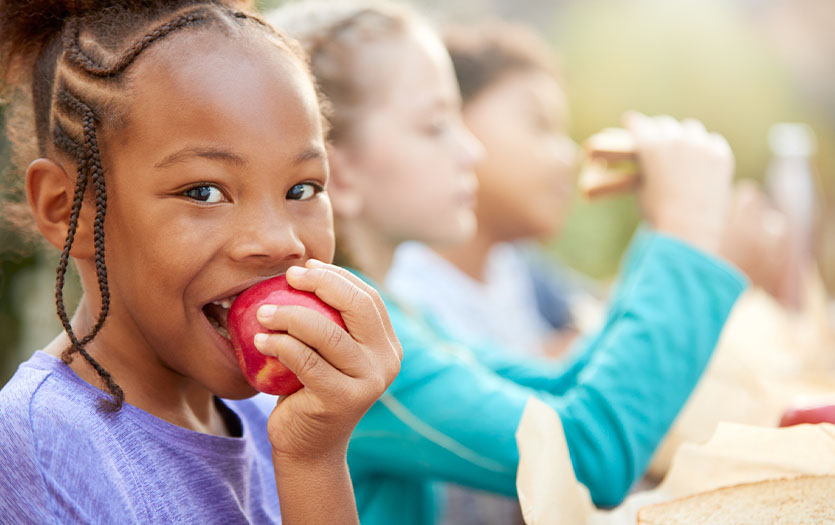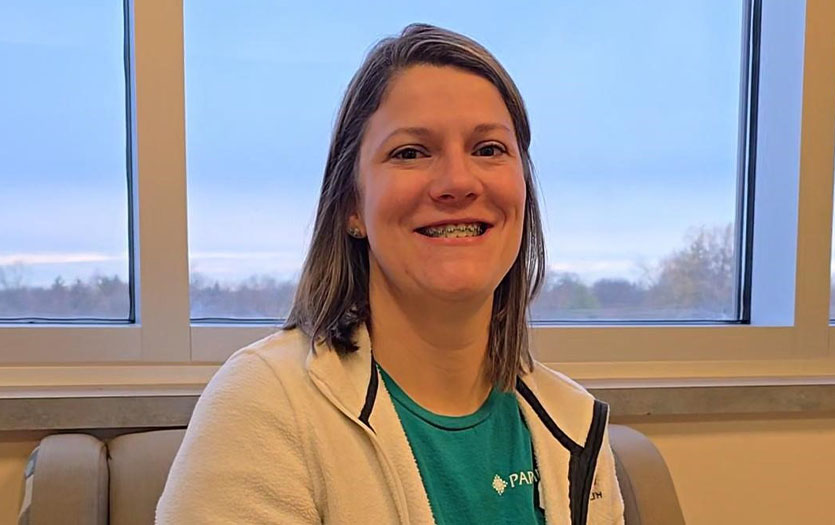
Enjoy this monthly mindfulness post from Dave Johnson, PhD, CNS- BC, LMFT, employee assistance specialist.
When I work with corporate or community leaders on the concept of mindfulness, I often do an exercise called the ball toss. I have a team between 5-12 members form a circle standing next to each other. Larger groups can be broken down into multiple circles. Giving one ball to a member, I explain the rules to all: 1.) Toss the ball to someone who is not next to you, 2.) Continue tossing this ball until everyone gets the ball one time, 3.) Remember the exact pattern of who you tossed the ball to, because the exercise will be done multiple times, and 4.) The most important rule of all, do not drop the ball! I am emphatic that the ball represents something very important like their customer, product, project or end goal.
As we start the toss with one ball, the team quickly moves through the sequence. We repeat the exercise a couple of times so that they secure a pattern. Then I add a second ball and tell them to repeat the exact same pattern, and I emphasize not to drop the ball. I add a third, fourth, and fifth ball to the cycle as we rapidly repeat the exercise. Let the fun begin! Some members are challenged, stressed, playful, or simply focused to succeed. Needless to say, multiple balls are flying through the air, sometimes colliding, but all members are engaged.
What the members often do not hear is me on the outside as the pandemonium explodes. I begin almost shouting, faster, “And do not drop the ball!” My observation after years of doing this exercise is that my command almost immediately results in multiple balls falling everywhere. If more than one circle is completing the exercise concurrently, whatever team completes the task first is sure to call out that they are finished as if this is a competition.
After the exercise we gather around and I facilitate a few questions as it applies to leadership. Members of the team often adapt the metaphor of “dropping balls” to apply to family and other areas of our frenzied lives. Certainly the busyness of holidays seems to come up as well. Folks mention falling into old patterns and traditions. Fear of gaining weight, feeling fatigue, and pressure to do more, buy more, or simply be more, are explored.
And so I ponder seasons of busyness and the connects through the lens of being a bit more mindful …
- Name the juggle. Certainly, we can name the balls we juggle during any holiday season. In addition to the everyday family and work demands, we add to our frenzy extra dinners, presents and expectations. Take time to name how mind and body are responses. This doesn’t make one feel differently but sometimes helps to comprehend that one is having a normal response to juggling. Viewing this as normal and a universal response helps to see a worldview in perspective. You are not alone. The world is juggling.
- Notice intentions. In mindfulness, we practice training the brain to notice when we are on autopilot and come back to the moment using all of our senses. Our intention is deliberately spending more time in the now. This practice doesn’t absolve us from planning, problem solving, and decision making about what to hold onto or what to let go of during busy life seasons, but it does bring us to a more purpose-filled presence to those in our inner circle. No amount of gift giving can replace our gift of presence. Value love, joy, peace, patience, gentleness and self-control.
- Anchor in the present moment. Patterns and traditions can be wonderful during the holidays because we know what to anticipate, expect or avoid. Sipping a cup of peppermint tea and noticing the warmth, aroma and taste can help me be the fly on the wall during holiday events. I can choose to breathe my body and take in the joy filled music of the season and the beautiful ornaments of life. I can avoid being hijacked into an emotional charged political debate, an autopilot extra plate of food or beverage that is not needed, or self-driven competition. Festivities are fun and dramatic, and I can be witness to both. Stress that can come from within me with unrealistic expectations diminishes when I intentionally stay anchored in the present moment.
- Cultivate compassion. When a mother soothes a newborn baby, she rocks, sings, sways, touches, nurses and soothes tenderly. Being compassionate toward self is sometimes a challenge with old hurts or self-messages of shame, guilt, competition or unrealistic expectations with holiday traditions and ritual. The inner and outer voices that shout at us to go faster, not drop, be the best, etc., perhaps were ingrained in our being with the best of intentions. Gently opening up to a bit kinder, gentler way of swaying is good for us and others who are in our circle. Physically, emotionally and spiritually take time to be tender and soothe just like the image of a new mother. Take three slow breaths before getting out of bed or before mealtime. Play a calming piece of music. Burn a candle and inhale its fragrance. Look into the eyes of a baby, an elder or a beloved. Sustain your awareness of compassion within and between.
- Acknowledge pain and grief. Holidays are often paired with the memories of those who have passed and are no longer here physically. Seeing others expressing joy when we feel sad reminds us of how seemingly out of sync we are. Grief can be raw, ruthless, and dominating. Embracing mindfulness during the holidays can help us ride this season knowing that, like other seasons of life, nothing is permanent.
- Gift. Saint Francis of Assisi is credited for saying that “It is in giving that we receive.” Some of the most precious gifts of life require little financial investments. Gifts of listening, affection, a handwritten note, laughter, compliments and prayer can be done intentionally and with presence. We can hone in on doing a favor or simply being still with someone who is struggling. We can honor the desire of someone to be left alone. We can gift ourselves with short periods of solitude, quiet or time to reflect with prayer, journal or simple pause. Not long ago I noticed a necklace in the shape of a bone at a pet store. It read, “come, sit, heel”. As I ponder the gift of mindfulness, I plan to “come, sit, and heal” this holiday season.
- Seek resources. Mindfulness-based stress reduction (MBSR) practice has been extensively researched and proven helpful for coping with stress and change, grief, healthy eating patterns, pain, anxiety, depression and many other chronic disease and autoimmune disorders. For a free 1:1 in person or phone consultation with Dr. Dave or to find out about more on Mindfulness & Stress Management programs, contact the Parkview Center for Healthy Living at (260) 266-6500. Dr. Dave also provides on-site guidance for teambuilding and transformational leadership, among other topics. To learn more about Employees Assistance Programs for your company, call Business Development at (260) 373-9013.
Other resources:
WWW.InvisibleInklings.com (sign up for free monthly word-based mindful healing exercises) from Dr. Dave and Kathy Curtis, Parkview Healing Artist.



